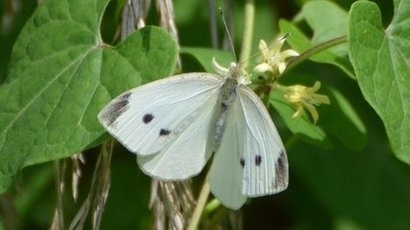
The V-shaped posture is adopted by the Cabbage White in order to heat up the butterfly’s flight muscles before take-off. Scientists from the Environment and Sustainability Institute (ESI) and the Centre for Ecology and Conservation, based at the University of Exeter’s Penryn Campus in Cornwall, have discovered that replication of the posture can increase the power-to-weight ratio of solar energy arrays by 17 percent, thereby making them incredibly more efficient.
The team has published the findings in the scientific journal, Scientific Reports.
“Biomimicry in engineering is not new” said lead author of the research, Professor Tapas Mallick. “However, this truly multidisciplinary research shows pathways to develop low cost solar power that have not been done before.”
Professor Richard French-Constant, an expert in butterfly mimicry at the University of Exeter, added that the discovery proves the lowly Cabbage White to be not just a pest of garden cabbages but also an insect that is an expert at harvesting solar energy.
The V-shaped posture is known as reflectance basking and is used by the butterflies to maximise the concentration of solar energy onto their thorax. Specific sub-structures of the wings allow the light from the sun to be reflected most efficiently, ensuring that the flight muscles are warmed to an optimal temperature as quickly as possible.
The team of scientists investigated how to replicate the wings to develop a new, lightweight reflective material that could be used in solar energy production. They discovered that the optimal angle by which the butterfly should hold its wings to increase temperature to its body was around 17 degrees, which increased the temperature by 7.3 degrees Centigrade compared to when held flat. They also found that replication of the simple mono-layer of scale cells found in the butterfly wings in solar energy generators could vastly improve the power-to-weight rations of future solar concentrators, making them significantly lighter and so more efficient.
For additional information:
White butterflies as solar photovoltaic concentrators (paper)

